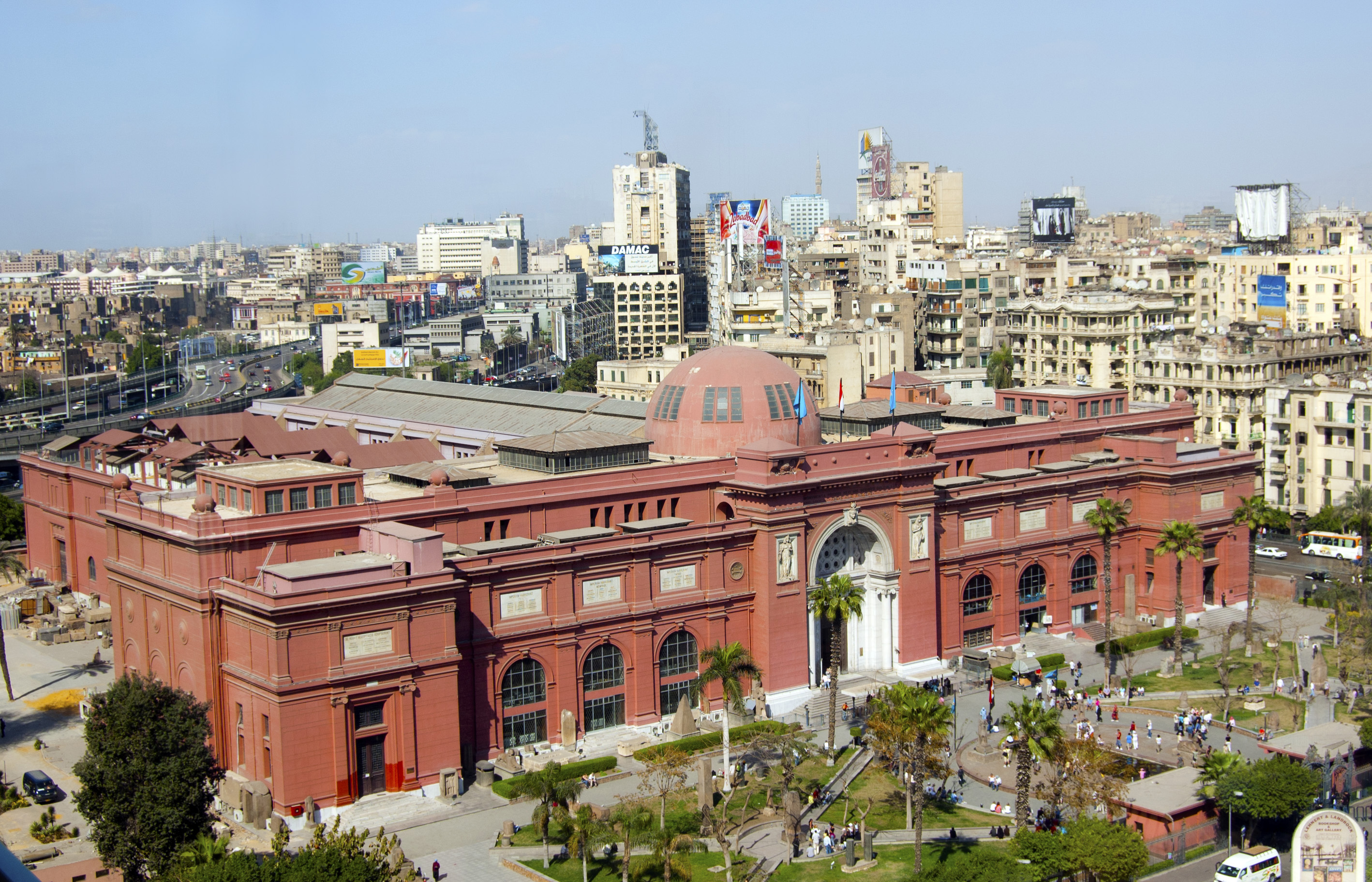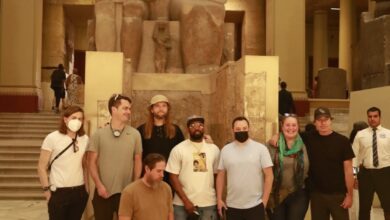Thousands congregated Friday in Tahrir Square, dubbed Egypt’s “liberated zone" by protesters. Friday marked day 11 of the revolution that erupted on 25 January to demand the ouster of the Hosni Mubarak regime.
“Before 25 January, I didn’t hope for more than a few hundred to take part in the planned protest,” activist Nariman Youssef says. But 25 January was destined to become a day of nation-shaking protests, which, in Cairo, converged into centrally-located Tahrir Square. “Today, it feels like a utopia in here,” Youssef said.
Conceived as part of Khedive Ismail’s "Paris on the Nile" dream about Cairo in the 19th century, Tahrir Square became a model of sought-after modernity. Throughout the years, it grew to become a site of political dissent, most notably during the 1977 bread riots, the 2003 demonstrations against the US-led war on Iraq, and, today, the "Revolution of Anger."
For the times in between, Tahrir Square was a bustling center connecting one end of the city to the other, often ripe with the difficulties associated with Cairo’s busy everyday life. Fast food chains, travel agencies and touristy bazaars have been the main facets of the iconic square in its 21st-century attire.
But for many of the protesters who took over the square today, the area has been experienced in an unprecedented manner.
“For me, the square always meant the Mugamaa [the capital’s main administrative hub], which is a face of the government,” said protester Malak Labib, who has been sleeping at the square for the last few days. Alongside her fellow activists, she has set up a shelter in one corner of the square, consisting of three tents. One is saved for food, the other for sleeping bags and the third for people to take turns resting in.
Now Labib suggests the square be renamed to "Midan al-Thawra," or "Revolution Square" in Arabic.
Besides the thousands camping around the square for the past few days, the square speaks the revolution. A large piece of cloth was rolled on the façade of a facing building. “Our Demands,” it reads, listing seven points, starting with Mubarak’s ouster and moving on to an interim government free of any figures associated with the current regime. The list of demands also includes the dissolution of parliament, an investigation into the violence waged against protesters on 29 January, a new constitution, the end of the emergency law and free elections.
The list of demands on the building’s façade overlooks the popular organization going on in the square: intermittent garbage collection rounds, food and water procurement and distribution, a media center, and a field hospital. Music, poetry and graffiti are all forms of on-site entertainment in the square. In hundreds of pockets, groups gathered here and there to honor the fallen, speak politics, remember the past, and ponder the future.
“What I am seeing today is one of my fantasies,” Khouloud Baidas, a protester, says. “I don’t know what else I can dream of.”
Besides the political battle that the square embodies today, thoughts about its future are also discussed. “It should remain an open space, in which people can speak out peacefully,” Baidas says.
For activist Mohamed Kalfat, the square should remain a symbol of liberation. “This is a place where we fought battles, spilled blood, and talked politics at night," he says. "It should be opened up as a festive pedestrian area on 25 January of every year to commemorate these days."
Kalfat is one of thousands who fiercely fought to hold the square on 29 January, when pro-Mubarak thugs stormed the square with batons and Molotov cocktails. When he woke up the following day to see that all his friends were still in possession of the square, he realized the scope of the people's revolution. “But the revolution should spread everywhere, not just Tahrir,” he says.
Another protester suggested that a memorial be designed at the heart of the square to commemorate the more than 300 people who have lost their lives within the last 11 days. A museum idea was also floated, in which memories of the revolution could be put on display, not to be forgotten when everyday life returns to the usual.
“What matters most is that the square remains liberated and is not the personal property of one group or another,” says Kalfat, before disappearing into the teeming throngs of Friday's historic Day of Departure.




